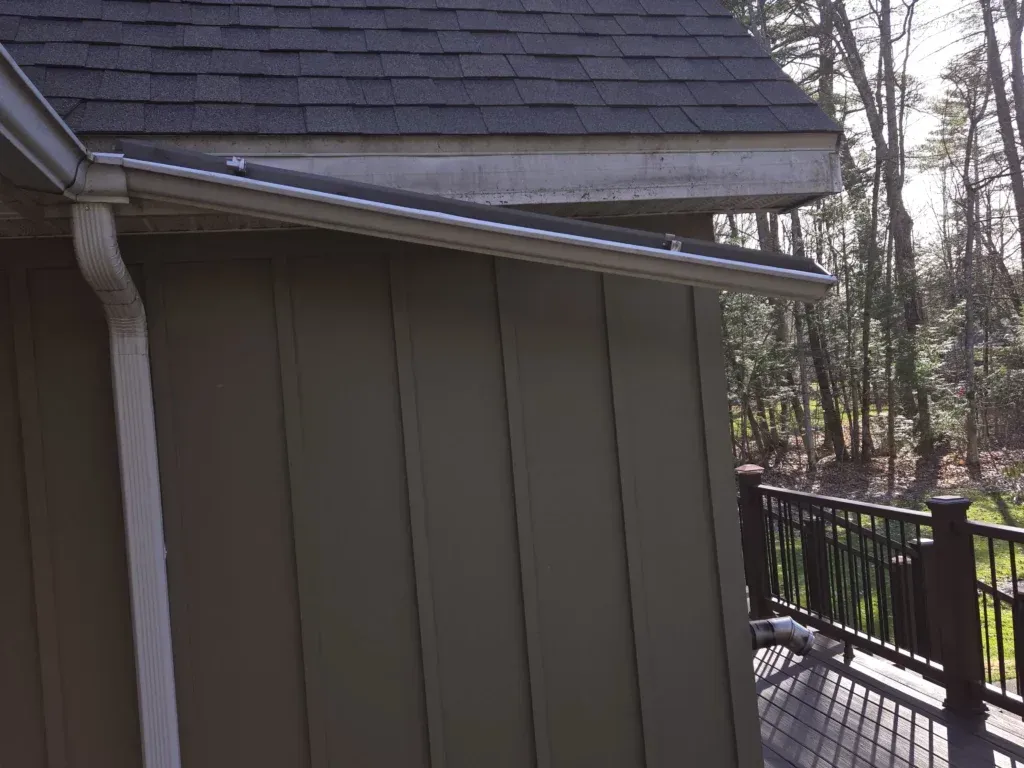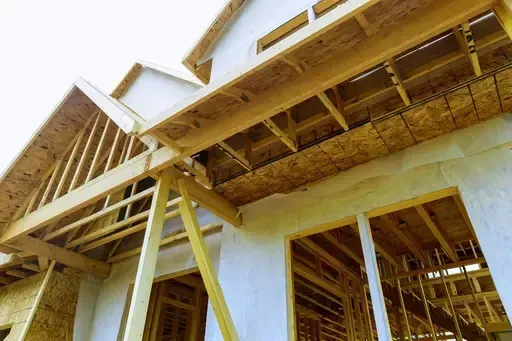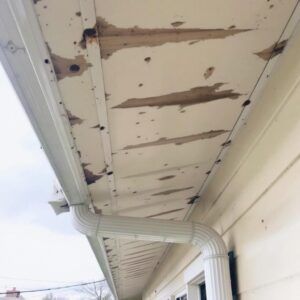Should You Replace Gutters When Replacing Your Roof?
When it comes to replacing your roof, many homeowners in Wichita wonder if they should replace their gutters at the same time. While gutters don’t always need to be replaced during a roof project, it often makes sense to consider replacing or upgrading your gutters along with your roof to protect your home and avoid future expenses.
We’ve seen that older or damaged gutters can limit the effectiveness of a new roof by failing to properly channel water away from your home. Replacing gutters while the roof is being installed also gives us better access to parts of the house that are usually hidden, making it easier to ensure everything fits and works together seamlessly.
At Wichita Gutters, we help homeowners evaluate the condition of their gutters and advise on when a replacement is the smartest choice. Understanding this interaction can save you time, money, and potential water damage down the road.
[If you're replacing your roof, check out our gutter installation and gutter repair services]

Understanding the Role of Gutters and Roofs
Gutters and roofs serve distinct but interconnected roles in protecting our homes from water damage. Each component addresses specific challenges posed by weather, especially rain and snow. Knowing how they function individually and together helps us make informed decisions about maintenance and replacement.
How Gutters Protect Your Home
Gutters channel rainwater and melting snow away from the foundation, walls, and landscaping. By directing water flow, they prevent soil erosion and basement flooding, which can lead to costly repairs.
If gutters are clogged, sagging, or damaged, water can overflow or pool near the house. This may cause wood rot, mold growth, and damage to siding and fascia. Regular inspection is crucial to identify issues early.
Properly functioning gutters also help maintain the structural integrity of decks, patios, and walkways. For homes in Wichita, with its seasonal rain and occasional storms, gutters are essential in managing water runoff efficiently.
The Importance of Roof Integrity
The roof acts as the first line of defense against weather elements. It shields the home from rain, wind, hail, and extreme sun, preventing moisture from entering the interior.
A damaged or aging roof can have missing shingles, leaks, or weakened underlayment. These problems allow water to seep inside, causing damage to ceilings, insulation, and electrical systems.
Maintaining roof integrity ensures energy efficiency by protecting insulation and preventing drafts. When roofs deteriorate, timely replacement helps avoid larger, more expensive repairs down the line.
How Roofs and Gutters Work Together
Roofs and gutters form a system designed to keep water moving safely away from the home. The roof collects precipitation, while gutters capture and direct the flow to downspouts, reducing water pooling around the foundation.
If either component fails, the whole system’s effectiveness drops. For example, if gutters don’t seal properly to the roof edges, water can leak behind them, damaging fascia boards and soffits.
Replacing gutters during a roof project can improve the seal and ensure proper alignment. Coordinating these upgrades often saves labor costs and prevents issues caused by worn-out connections. This synergy is especially important for long-term home protection in Wichita’s climate.
[Soffit and fascia is part of your roof as well. Our soffit and fascia services can help if you need a partial roof replacement]

Signs Your Gutters May Need Replacement
We look for specific indicators when deciding if gutters require replacement, especially during a roof project. These signs include visible damage, persistent leaks or overflow, and structural issues like sagging or detachment.
Visible Damage and Wear
When gutters show rust spots, extensive cracks, or holes, it compromises their function. We inspect closely for any gaps between sections or separation from the fascia board. Peeling paint or warped sections also signal that the gutters have aged beyond repair.
Damage caused by weather, such as corrosion or dents from hail, tends to worsen over time. These defects allow water to escape or pool improperly, which can harm your siding and foundation. If these symptoms are present, replacement is often the best solution.
Frequent Leaks or Overflow
Leaks that reoccur after repairs or gutters that overflow during moderate rain indicate a failing system. Clogged gutters can sometimes cause overflow, but if cleaning doesn’t help, the problem likely lies in poor design, sagging, or internal damage.
Overflow water pooling near your home can erode soil and damage the foundation. We assess if the gutters are properly directing water away from the house and will recommend replacement if the system cannot handle typical rainfall efficiently.
Sagging or Detachment
Gutters hanging lower than their original slope or visibly pulling away from the home suggest weakened fasteners or rotted wood. This sagging reduces water flow and increases the risk of gutters pulling off entirely.
We check the entire gutter line for sections that appear loose or uneven. Structural integrity is crucial because compromised gutters can't protect your roof or foundation effectively. If repair won’t provide a lasting fix, replacement is necessary.
Should You Replace Gutters When Replacing Your Roof?
Replacing a roof can raise important questions about whether to replace the gutters at the same time. We look at scenarios that require gutter replacement, the benefits of doing both projects together, and the risks involved if only the roof is replaced.
When Gutters Must Be Replaced
Gutters need replacement mainly when they show signs of damage or aging. Look for cracks, rust, sagging, or leaks. Gutters with poor alignment or backed-up water often indicate failure. If gutters are over 20 years old or made from outdated materials, replacing them during a roof project makes sense.
In Wichita’s climate, ice dams and heavy rain can accelerate gutter wear. Compromised gutters can cause water damage to a new roof’s edge or the building’s foundation. We recommend a professional inspection to determine if gutters are still strong enough to protect your home alongside a new roof.
Advantages of Coordinated Replacement
Replacing gutters and roof simultaneously provides several practical benefits. First, it can reduce labor costs since contractors manage both jobs at once and avoid duplicate scaffolding or cleanup efforts.
Second, new gutters ensure proper fit and integration with the roof’s design. This helps prevent water overflow and protects siding, soffits, and landscaping. Coordination also reduces the risk of mistakes like mismatched downspouts or inadequate slope, which can occur when working on these systems separately.
Finally, doing both projects together gives homeowners peace of mind knowing their drainage and roofing work are fully up to date.
Potential Risks of Replacing Only the Roof
Replacing a roof but keeping old gutters can pose risks. Damaged gutters might fail to handle water runoff from the new roof, leading to leaks or pooling near the foundation. This can cause structural damage or mold issues over time.
Additionally, removing and reinstalling old gutters during roofing work can cause accidental damage. Older gutters may detach or bend, requiring repairs anyway.
Worse, if gutters are slightly warped or clogged and not replaced, the new roof may suffer stress from improper water flow. This could shorten the lifespan of your new shingles or roofing material.
We encourage careful evaluation of gutter condition before deciding to keep them when installing a new roof.

Benefits of Replacing Gutters and Roof Together
Replacing both your roof and gutters at the same time can lead to a more coordinated installation process with practical advantages. It helps ensure that both systems work in harmony to protect your home and can improve the overall effectiveness of water management.
Cost Savings and Efficiency
Combining gutter and roof replacement reduces overall labor costs because both installations can be done during the same visit. This minimizes the need for multiple service calls and lowers the disruption to your daily routine.
Materials and equipment are often easier to handle when done together, allowing contractors to work more efficiently. This can also mean negotiating better pricing for bundled services or materials.
Scheduling both projects concurrently simplifies communication and prevents future expenses related to repairs or adjustments that might be needed if gutters and roof are replaced separately.
Improved Home Protection
Gutters and roofs play key roles in directing water away from your home. When replaced simultaneously, new gutters can be properly aligned with the roof edge, reducing the risk of leaks and water damage to your foundation, siding, and landscaping.
A new roof provides a strong base for gutter installation. This helps prevent issues caused by old roofing materials that might cause gutters to misalign or deteriorate faster.
Together, they form a unified system that better handles rainfall and snow, protecting your home from mold, wood rot, and erosion around the foundation.
Enhanced Curb Appeal
Replacing gutters and the roof in one seamless process improves the aesthetic appeal of your home. Matching new gutters to your new roof color and style creates a cohesive, clean look.
Fresh gutters and roofing materials enhance the overall appearance of your exterior. This can raise your property’s value and provide a well-maintained look that stands out in your neighborhood.
Investing in both upgrades simultaneously means you avoid the patchwork look caused by mismatched or aging components, creating a more polished and attractive home exterior.
Challenges of Staggered Replacement
Replacing gutters and roofing at different times can lead to complications that affect cost, efficiency, and home protection. We often see problems related to the extra work involved, difficulties in matching new materials with old ones, and increased expenses over time.
Increased Labor and Disruption
When gutters and roofs are replaced separately, the labor required nearly doubles. Removing and reinstalling gutters during a roof project is routine, but doing this multiple times means extra labor costs for removing, reinstalling, and repairing gutters twice.
This repetitive work also causes longer disruption to your daily routine. Jobs that overlap, like ladder use and scaffold setup, must be repeated, which extends the overall project timeline. For homeowners in Wichita, this means more noise and activity around the property for longer periods.
Integration Issues With Old Gutters
Mixing new roofing with old gutters often results in mismatched materials and compromised function. Gutters wear out due to rust, sagging, or outdated styles. Connecting new roofing systems to gutters that are damaged or poorly aligned can lead to improper drainage.
This misalignment increases the risk of water damage near the roofline and foundation. We recommend evaluating gutter condition closely if you plan a staggered replacement. Often, upgrading gutters during the roofing process prevents these integration problems.
Higher Long-Term Costs
Staggered replacement sometimes appears less costly initially, but it often leads to higher expenses over time. Repairing or replacing gutters after a new roof is installed can cause avoidable damage to the roofing materials.
Additional contractor visits and material handling raise labor and service fees. Also, inefficient gutter systems that are not upgraded with the roof can reduce the effectiveness of your home’s water management, potentially leading to expensive repairs later. Combining gutter and roof replacement can save money by reducing these risks and consolidating work.
Conclusion
When replacing your roof, evaluating the condition of your gutters is an important step. If your gutters show signs of damage, rust, or improper fit, it is practical to replace them during the roofing project. This approach helps avoid future disruptions and can save time and money overall.
Replacing gutters simultaneously with your roof can also improve your home's protection from water damage. Well-functioning gutters complement a new roof by efficiently channeling water away from your foundation and siding. They help maintain the longevity of your home’s exterior.
Here are key points to consider:
- Condition: Replace gutters if damaged or worn.
- Convenience: Combining projects reduces labor and equipment costs.
- Upgrade: Opportunity to improve gutter style, size, or material.
At Wichita Gutters, we advise evaluating both roofing and gutter needs closely. A joint replacement project ensures better coordination and peace of mind. We’re here to help assess your gutters and provide solutions suited to the Wichita climate and homes.
